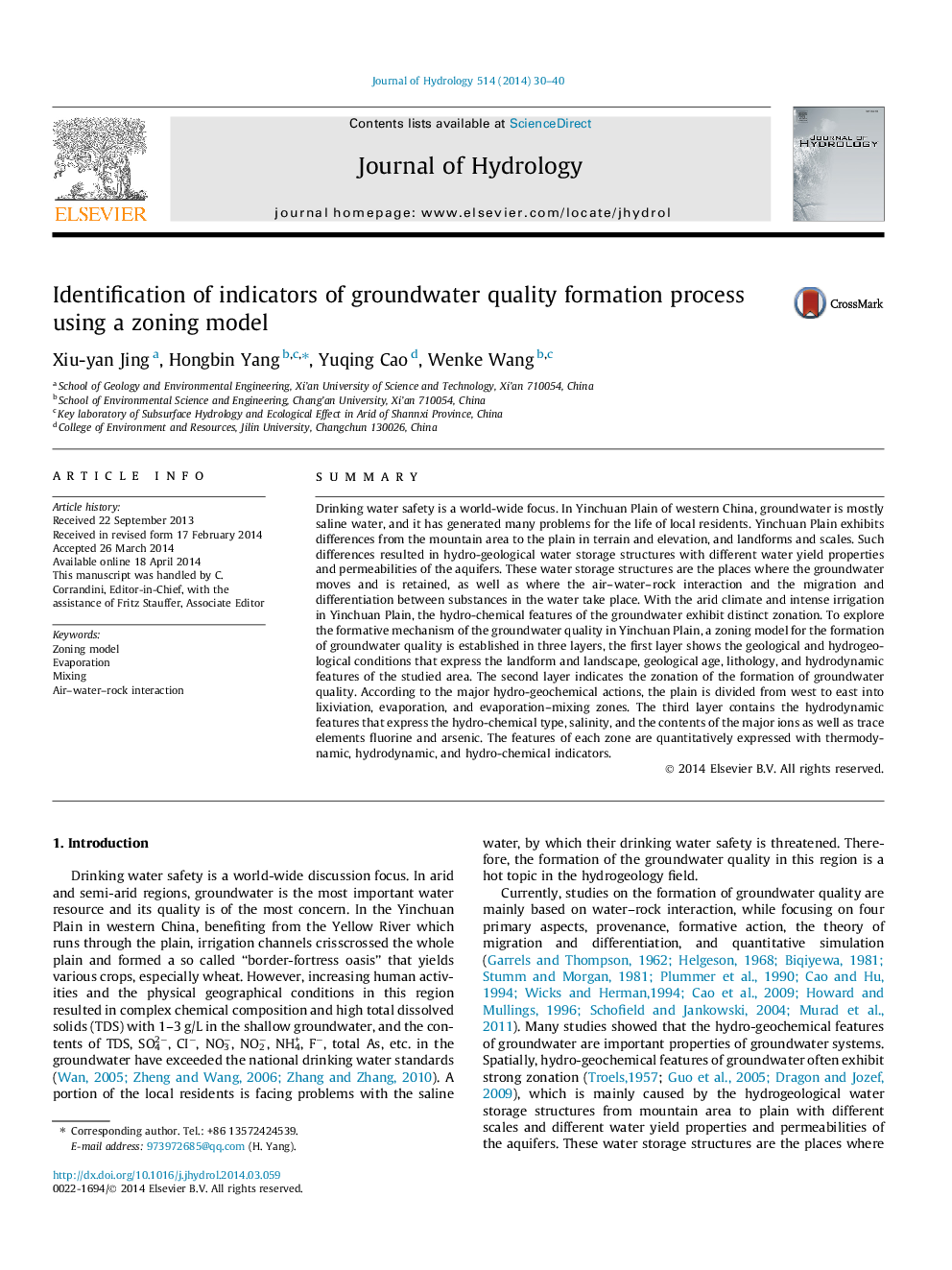| کد مقاله | کد نشریه | سال انتشار | مقاله انگلیسی | نسخه تمام متن |
|---|---|---|---|---|
| 4576000 | 1629934 | 2014 | 11 صفحه PDF | دانلود رایگان |
• We divided the plain into lixiviation, evaporation and evaporation–mixing zone.
• Establishing a zoning model including three layers.
• Each zone is expressed with thermodynamic, hydrodynamic and hydrochemical indicators.
SummaryDrinking water safety is a world-wide focus. In Yinchuan Plain of western China, groundwater is mostly saline water, and it has generated many problems for the life of local residents. Yinchuan Plain exhibits differences from the mountain area to the plain in terrain and elevation, and landforms and scales. Such differences resulted in hydro-geological water storage structures with different water yield properties and permeabilities of the aquifers. These water storage structures are the places where the groundwater moves and is retained, as well as where the air–water–rock interaction and the migration and differentiation between substances in the water take place. With the arid climate and intense irrigation in Yinchuan Plain, the hydro-chemical features of the groundwater exhibit distinct zonation. To explore the formative mechanism of the groundwater quality in Yinchuan Plain, a zoning model for the formation of groundwater quality is established in three layers, the first layer shows the geological and hydrogeological conditions that express the landform and landscape, geological age, lithology, and hydrodynamic features of the studied area. The second layer indicates the zonation of the formation of groundwater quality. According to the major hydro-geochemical actions, the plain is divided from west to east into lixiviation, evaporation, and evaporation–mixing zones. The third layer contains the hydrodynamic features that express the hydro-chemical type, salinity, and the contents of the major ions as well as trace elements fluorine and arsenic. The features of each zone are quantitatively expressed with thermodynamic, hydrodynamic, and hydro-chemical indicators.
Journal: Journal of Hydrology - Volume 514, 6 June 2014, Pages 30–40
